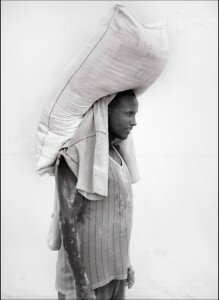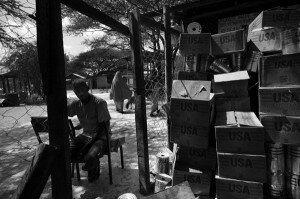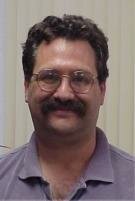Dadaab, the Somali struggle to flee violence
Transforming Race Conference — By Guest Author on February 15, 2010 at 05:03By Tariq Tarey, Program Manager, Somali Documentary Project
Somali people have been fleeing the violence in their homeland since before the civil war began in 1991. However, with the Ethiopian invasion in 2006, the exodus has seriously increased. Since that time, nearly 2 million people were displaced from Mogadishu, the capital city, alone. In 2008, the United Nations High Commissioner for Refugees (UNHCR) declared Somalia to be the worst humanitarian crisis in the world. To make matters worse, the World Food Program claims that 4 million Somali people are on the verge of starvation.
Many of these displaced people will make their way south from the Somali border to the refugee camp in Dadaab, Kenya. In 1991 the UNHCR built Dadaab as a temporary solution to house 90,000 people who were immediate refugees to the war. Currently, 300,000 people live in Dadaab and many have been there for nearly 20 years. In November of 2008, approximately 1,000 forced migrants a month were making their way to Dadaab. However, only 5,000 people a year are resettled to the United States, Canada and Australia.
The World Food Program in conjunction with CARE International provide the refugees with food, but the available nutrition is not really sufficient to maintain human life. Every fifteen days, a refugee receives 3.9 kg of wheat flour, 1 kg of red beans, 1 liter of corn oil and 3.4 kg of maize. This diet offers an insufficient number of calories and nutrients, so people have to find other methods of surviving. Some work unloading grain for CARE and earn 30 cents a day. Others earn less unloading firewood. Still others survive by receiving remittances from family members in first world countries.
If diet or mosquitoes make people sick, there is little medical care. There are 3 clinics manned by volunteers within the camp, but their labor and the supplies they receive are terribly inadequate compared with the need.
Nearly half of the occupants of Dadaab are children, but the state of education in the camp is profoundly inadequate. Perhaps we should be glad that there are schools in Dadaab, schools, which are of course better than most could find in war-torn Somalia. However, when you consider that most parents believe that the answer to Somalia’s problems lies with their children, the state of the schools in Dadaab seems sad. More than half the students are unable to move from elementary to secondary schools because a lack of supplies and space.
The Geneva Convention promises refugees the rights to move freely, educate their children, and the right to work equal to the nation granting asylum, and yet asylum for Somali refugees in Dadaab offers little food, almost no health care, inadequate education, work at wages that are nearly slave labor, and terrible boredom because for most people, there is almost nothing to do. Dadaab demonstrates the inadequacy of the refugee regime to live up to the ideals of its own international treaties. It also demonstrates the need of Somali people to work out their differences in a way that does not cause more people to flee to this warehouse of human beings that removes human rights, human freedom and condemns them to boredom and exploitation.
DADAAB: A NEW DOCUMENTARY ABOUT THE SOMALI STRUGGLE
Saturday, March 13 at the Transforming Race Conference from 9 - 10:30 a.m.
 Tariq Tarey is the project manager of the Somali Documentary Project. Born in Mogadishu, Somalia , he is a socially-conscious award-winning artist, who has been an active and a vital member of the photographic community in Columbus, Ohio since 2001. Tariq works closely with the Somali community, bridging the gap between the refugee culture and the culture of corporate America.
Tariq Tarey is the project manager of the Somali Documentary Project. Born in Mogadishu, Somalia , he is a socially-conscious award-winning artist, who has been an active and a vital member of the photographic community in Columbus, Ohio since 2001. Tariq works closely with the Somali community, bridging the gap between the refugee culture and the culture of corporate America.
Author: Guest Author (94 Articles)






 Share This
Share This Tweet This
Tweet This Digg This
Digg This Save to delicious
Save to delicious Stumble it
Stumble it





 The Border Network for Human Rights: Building an immigrant movement in the besieged borderlands
The Border Network for Human Rights: Building an immigrant movement in the besieged borderlands Canadian Aboriginals need justice, not tributes
Canadian Aboriginals need justice, not tributes Farm aid: The black and white of it
Farm aid: The black and white of it







